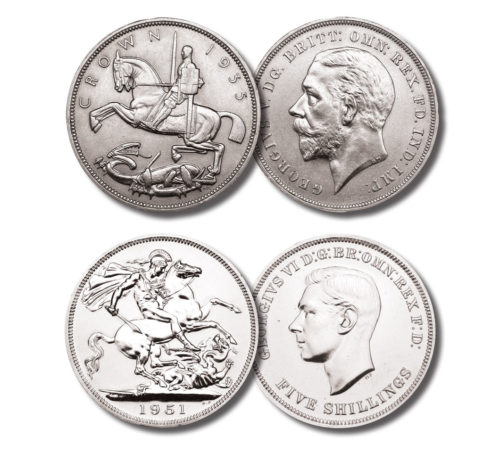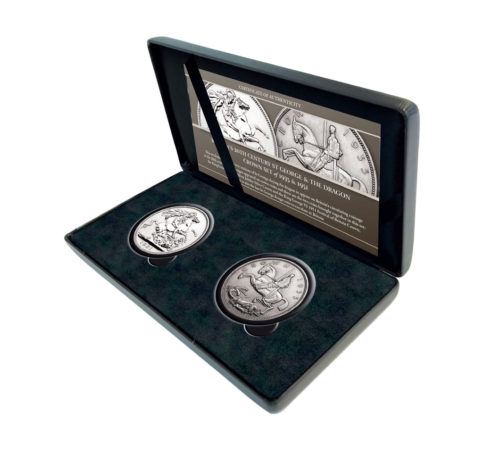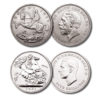Description
The image of St George slaying the dragon is iconic and has been closely connected with two of our most cherished coins: the sovereign and the crown.
The very first iteration of the design by Benedetto Pistrucci appeared in 1817 on the sovereign and by the time it appeared on the crown in the next year he had already developed and changed it. That second version which appeared on the crown from 1818 and the sovereign from 1821 is what we know today as the Classical Design: it’s of such quality it is still in use on sovereign coins today!
That Classical design by Pistrucci has appeared on gold sovereigns almost continuously from 1871 to the present day. However, it also featured on the crown coin, Britain’s five shilling coin. It appeared on the crowns of 1818 through to 1822, then from 1887 to the end of Queen Victoria’s reign. Only one crown was issued in King Edward VII’s reign in 1902 and that too featured St George.
In King George V’s reign the only St George and the dragon coin was produced in 1935 for the monarch’s Silver Jubilee (25th anniversary of reign). This coin was also Britain’s first ever commemorative coin, featuring a distinctive rendition of St.George slaying the dragon in a late Art Deco style, popular in the 1930’s when it was issued. When released it caused controversy as this design style differed dramatically from the more romantic Classical version which at that time had been in use for over a century.
For this very reason the 1935 Silver Jubilee Silver Crown -which was only ever minted for one year – is now regarded as a symbol of the influence of Art Deco on the design styles of the 1930’s.
It’s the only commemorative version of St George ever to appear on the British crown coin.
There was one more use of St George and the dragon on a crown coin and that came in 1951 when a special edition was minted as part of the Festival of Britain. To showcase the best of British minting, the original design by Pistrucci was chosen. The coins, were struck from cupro-nickel but to a‘specimen’ standard which uses techniques that produce coins that are better than Uncirculated but not as good as Proof. The resulting coins are of a very high standard given that many of them were produced at Festival Hall on London’s South Bank in a temporary facility.
This set, comprised of two British crown coins, features the only two versions of St George slaying the dragon to appear on Britain’s circulating coinage in the 20th century. Both designs appeared on crown coins and these are the two coins brought together in this set: the King George V 1935 Silver Jubilee Silver Crown and the King George VI 1951 Festival of Britain Crown, which is also the last St George coin to circulate in Britain. Both are one year issues.





